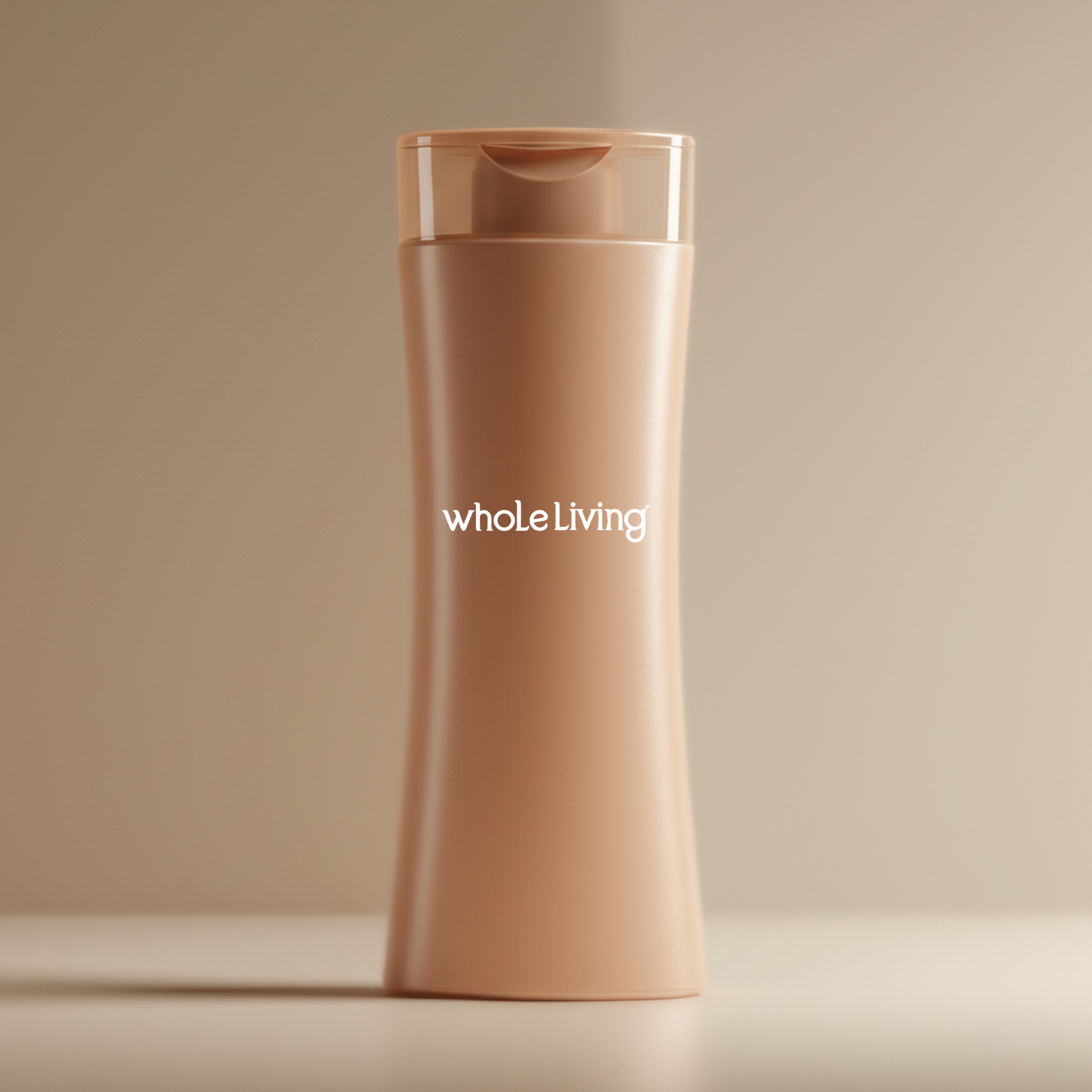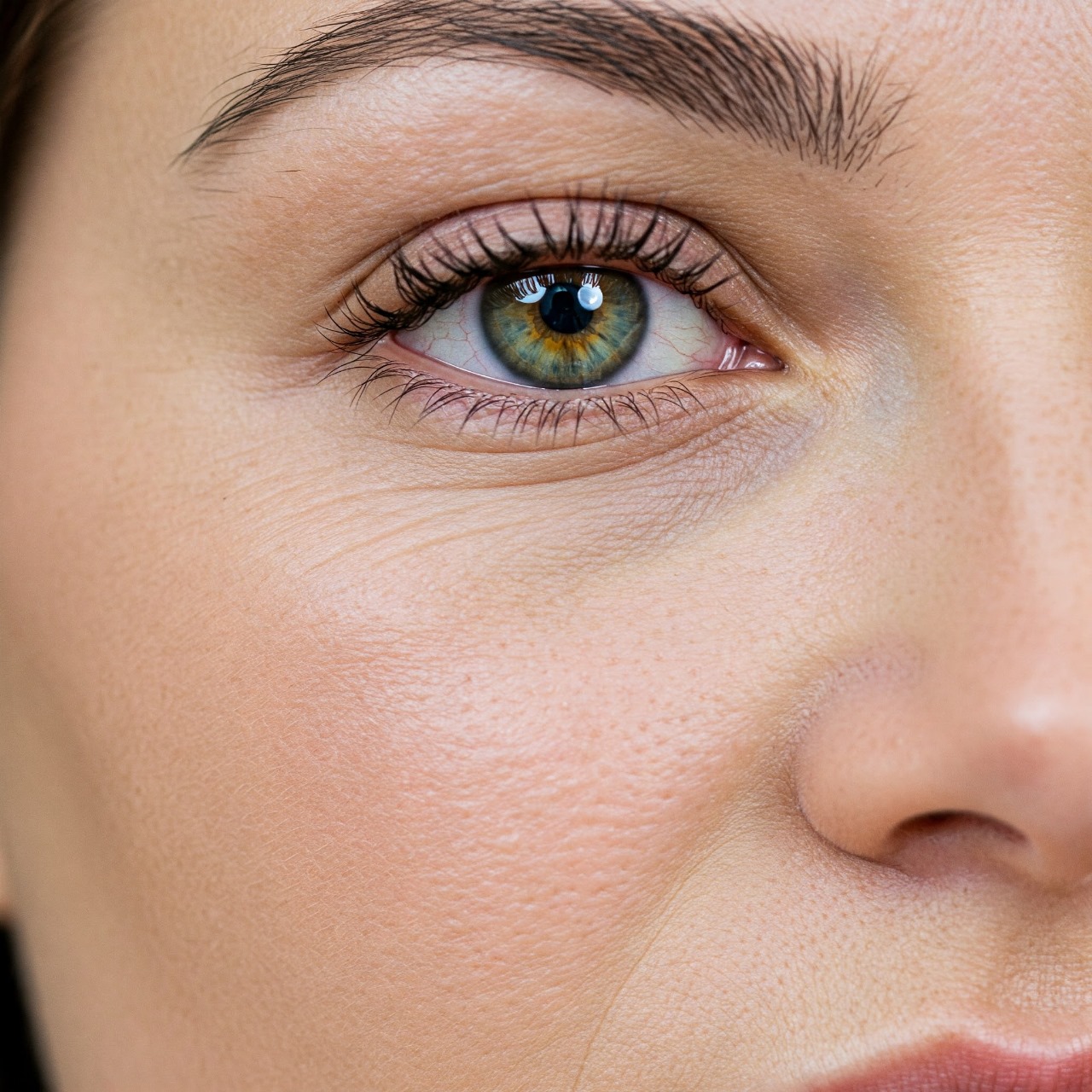In This Article
The body keeps the score in ways we don’t always expect. Long after a traumatic event passes, your body may still carry its imprint. This idea, explored deeply by Bessel van der Kolk, shows how traumatic experiences are not just mental wounds but physical ones too. Whether it’s a racing heart, tense shoulders, or feeling numb inside, your body may be holding onto more than you realize. And you’re not alone—many trauma survivors walk through life carrying memories their minds can’t always explain.
Sometimes, what you call anxiety or exhaustion is really your body speaking a language you haven’t yet learned to understand. That chronic tightness or sudden fear might be a whisper from your nervous system, shaped by past pain. Traumatic stress doesn’t just go away when life calms down. It lingers in your physical sensations and emotional responses. But here’s the hopeful part: once you understand what your body is trying to say, you can begin to heal.
By learning how trauma affects the emotional brain and nervous system, you gain a deeper awareness of your own healing path. This journey isn’t about blame or weakness—it’s about discovering how resilient your body truly is. The body keeps the score, yes, but it also holds the keys to recovery. You are not broken. You are wired to survive, and with care, you can also learn to thrive.
What Does “The Body Keeps the Score” Actually Mean?
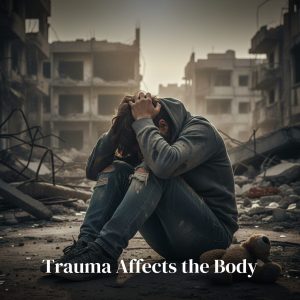
The phrase “the body keeps the score” comes from the work of Bessel van der Kolk, who spent more than thirty years studying how trauma affects the body and mind. It means that even when your thoughts have moved on, your body may still remember the fear, pain, or helplessness you once felt. This is especially true for trauma survivors and those who have lived through childhood trauma or other traumatic events. Your body stores those memories, not in words, but in physical sensations, stress responses, and habits you may not even notice.
When something reminds you of the original trauma, your body can react as if the danger is still present. Your heart might race, your muscles may tense, or your stomach may churn. This is not your imagination—it's how the emotional brain responds when it perceives a threat. The trauma literally reshapes the way your brain and nervous system function. And it can take time, patience, and the right tools to help your body feel safe again.
Understanding how trauma literally reshape your inner world helps you become more compassionate with yourself. It’s not about being dramatic or weak. It’s about recognizing that the entire human organism is impacted by trauma. You may be trying to move forward mentally, but your body may still be frozen in the past. And this awareness is the first step toward whole living.
Meet the Man Behind the Movement—Bessel van der Kolk

Bessel van der Kolk is a psychiatrist and researcher whose name has become closely tied to trauma recovery. His work in clinical practice has helped countless people understand how the body responds to trauma and how healing begins. Through working with courageous and memorable patients, he discovered that trauma survivors often struggle with more than just memories—they live with deep body-based reactions that disrupt daily life. His book, “The Body Keeps the Score,” became a guide for anyone seeking to understand the link between trauma and the body.
Van der Kolk's ability to connect research and clinical practice gave the mental health world a fresh perspective. He emphasized that talk therapy alone isn’t always enough, especially for those with severe traumatic stress. He explored treatments that work with the body, including movement, touch, and mindful awareness. These approaches offered hope to traumatized people who had been overlooked or misunderstood. And they reminded the world that trauma affects more than just the mind.
His approach honors the entire human organism, not just symptoms. Whether you're dealing with physical symptoms, emotional flashbacks, or a sense of disconnection, van der Kolk’s work can help you feel seen. It creates space for trauma survivors to be heard and validated. And it shows that with the right tools, healing is not only possible but deeply transformative.
13 Signs That Trauma Is Stored in the Body
Not all wounds are visible. Trauma survivors often carry silent burdens that show up in their bodies in ways that are easy to overlook. If you’ve ever felt tightness in your chest for no clear reason or experienced sudden waves of fear, your body may be holding on to unresolved pain. These signs are not random; they are messages from your body showing that the body keeps the score, even when your mind tries to move forward. Learning to recognize these signals is the first step toward gentle healing and self-awareness.
Here are 13 common signs that trauma may still live within your body:
- Chronic pain that doesn’t improve with rest or treatment.
- Muscle tension or stiffness, especially in the neck, shoulders, or back.
- Digestive issues such as nausea, bloating, or stomach pain without clear medical cause.
- Constant fatigue or low energy, even after a full night’s sleep.
- Emotional numbness, feeling detached from yourself or others.
- Panic attacks or sudden waves of fear that seem to come from nowhere.
- Sleep disturbances, including nightmares or restlessness.
- Racing heart or rapid breathing triggered by reminders of the past.
- Clenched jaws or grinding teeth, often during sleep or stress.
- Numbing and intolerable rage, emotions that feel too intense to control or completely shut down.
- Difficulty concentrating or memory lapses linked to traumatic stress.
- Feeling disconnected from your own body, as if you’re watching life happen from outside yourself.
- Sudden tears or irritability when confronted with small challenges.
These signs are your body’s way of asking for care. Each reaction, whether physical or emotional, is rooted in your emotional brain and nervous system’s effort to keep you safe. You might not connect these sensations to past pain, but your body does. By noticing them with compassion instead of judgment, you begin to rebuild trust with yourself. And that awareness is the doorway to deep healing and lasting calms.
READ ALSO: Seven Psychology Secrets To Refresh Your Everyday Mindset
How Trauma Affects the Body and Brain
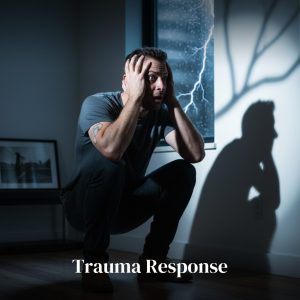
Trauma affects the body and brain in powerful ways. When you experience traumatic events, your brain and nervous system go into survival mode. This reaction can save your life in the moment, but it can also leave lasting changes. The emotional brain becomes overactive while the rational brain takes a back seat. This imbalance is one reason trauma survivors often feel stuck in fear or unable to think clearly.
Stress hormones flood your system during trauma, and for some, they never fully return to normal levels. The body remains on high alert, making it difficult to relax or feel safe. This constant tension can lead to physical symptoms like headaches, digestive problems, or even heart disease. Over time, the trauma literally reshape your brain's natural neuroplasticity, making it harder to process emotions or trust others. It’s not a personal failure—it’s how the body tries to protect itself.
These changes can affect your ability to form trusting relationships or feel connected to your own body. You might notice emotional reactions that seem out of proportion or find yourself avoiding certain people or places without knowing why. Understanding how trauma affects your body gives you power. It helps you move from frustration to compassion for yourself. And it opens the door to gentle, lasting healing.
What Trauma Literally Reshapes in You
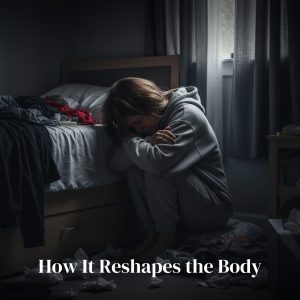
Trauma doesn't just impact your thoughts — it changes your entire way of being. When you've lived through traumatic experiences, your emotional responses, memory, and behavior may shift without you even realizing it. This is because the trauma literally reshape how your score brain functions, especially in areas that control fear, memory, and emotional regulation. Instead of just remembering what happened, your body replays it through reactions, flashbacks, or moments of numbness. The result is that your body holds a traumatic memory, even when your conscious mind tries to forget.
These changes affect the entire human organism, from your heartbeat to your digestion. You may find yourself overly alert in safe situations or shut down in moments that need your attention. These aren’t just habits — they are protective patterns your brain and body learned to survive. Over time, these patterns can lead to mental health problems, physical symptoms, or emotional withdrawal. It's important to understand that your body is not betraying you, it’s simply doing what it believes is necessary to keep you safe.
When trauma reshapes you, it often blurs the line between past and present. You might react to a tone of voice or a facial expression without knowing why. That’s the score brain pulling information from the past and sounding the alarm. By gently recognizing these patterns, you begin to reclaim your peace. Healing starts when you realize your body is trying to help, not harm — and with the right support, you can guide it back to calm.
How Trauma Shows Up in Everyday Life
Trauma doesn’t always scream. Sometimes, it shows up quietly—through your routines, your habits, and the ways you protect yourself. You might avoid certain people or places without knowing why. Or maybe you feel on edge during joyful moments, unsure of how to fully relax. These gentle whispers often come from your nervous system, still reacting to danger that no longer exists.
What feels like overreaction is often your body remembering how it once survived. The brain, especially the emotional brain, forms deep patterns during traumatic events. These patterns can guide your present-day reactions without you realizing it. Instead of blaming yourself, try to see these as signs that your body did its best to protect you. With compassion, you can now begin to shift those patterns.
Here are 10 common ways trauma may show up in your everyday life:
- Avoiding people or places that feel emotionally charged, even without clear reason.
- Feeling disconnected during moments that should bring joy or peace.
- Shutting down during conflict or emotional conversations.
- Overreacting to sounds, facial expressions, or sudden changes.
- Struggling to form trusting relationships or letting others in.
- Hypervigilance, always feeling on guard or scanning for threats.
- Zoning out during conversations or daily tasks.
- Difficulty setting boundaries, especially when feeling unsafe.
- Strong emotional swings, such as quick shifts from calm to anger or sadness.
- Feeling unsafe even in calm, supportive environments.
These responses are not flaws. They’re deeply connected to attachment research and how trauma shapes the body and mind. With growing self-awareness, you can gently separate past survival instincts from your present reality. And when you do, you open the door to living with more peace, connection, and choice.
The Hope Within—Brain Science and Human Resilience

Even though trauma can leave a lasting mark, your brain and body are capable of healing. This is thanks to something called the brain’s natural neuroplasticity — the brain’s ability to rewire and adapt. When you practice self-awareness, gentle routines, and safe connection, you invite your body to feel safe again. This process doesn’t rush you; it meets you where you are and moves forward at your pace. Healing isn’t about forgetting the past but building a life beyond it.
One of the most beautiful parts of this journey is discovering your own human resilience. You’ve already survived. Now, you get to learn how to thrive. With care and intention, the same brain that responded to trauma can learn to respond to calm, joy, and connection. These changes are possible at any age, in any stage of life. The science of brain science supports what many survivors already know — that healing is possible with compassion and practice.
Fostering self-awareness brings you back into your body, helping you notice what’s real and what’s old fear. This gives you the power to pause and make choices, not just live in reaction. Your nervous system, once overwhelmed, can learn self-regulation through breathwork, mindfulness, and steady routines. It may take time, but every small step forward builds your capacity for peace. You are not broken — you are being reshaped by healing.
READ ALSO: Whole Living Isn’t Whole Without These Five Pillars
Freeing Trauma Survivors—What Real Healing Looks Like

Healing looks different for everyone, but it often begins the same way — with hope and courage. Many of van der Kolk’s courageous and memorable patients showed that true change starts when someone feels safe enough to be seen. For trauma survivors and traumatized children, healing isn’t about going back to who they were. It’s about learning to love the person they are becoming. They begin to trust their own bodies again and connect with others without fear.
Real healing may not be dramatic. Sometimes, it’s as simple as being able to sit still or take a deep breath without panic. Other times, it means reclaiming joy, laughter, and relationships. When survivors move through trauma recovery, they gain new tools to soothe their nervous systems and respond with compassion. Their stories remind us that healing is possible even after years of silence or struggle.
By walking the path of recovery, trauma survivors become free to live with intention. Their experiences, once heavy with shame, are now sources of strength and wisdom. These stories also show that the effects of trauma can be reversed with the right care. Whether it’s through body-based practices, community support, or safe therapy, freedom is within reach. You deserve that same freedom — and it starts with believing it’s possible.
The Tools That Work—Trauma Treatment Options
There is no single path to healing, but there are gentle, effective tools that can support you through your trauma recovery. The best approaches meet you where you are, honoring your body, mind, and story. While talk therapy is a strong foundation for many, sometimes words alone can't reach the deep places where trauma lives. That’s why other methods that focus on the body have become essential in treating trauma.
Here are six powerful tools often used in trauma treatment:
- Talk Therapy – Creates a safe space to explore traumatic experiences, rebuild trust, and gain new perspective.
- Eye Movement Desensitization (EMDR) – Helps process traumatic memory by using eye movements or tapping to reduce emotional intensity.
- Somatic Experiencing – Focuses on releasing bodily sensations linked to trauma by tracking how the nervous system responds.
- Internal Family Systems (IFS) Therapy – Guides you to connect with internal parts that hold pain, fear, or anger, offering compassion and inner healing.
- Mindfulness and Breathwork – Calm the nervous system and support self-regulation through present-moment awareness.
- Creative Expression – Art, writing, music, or movement help release emotions that may feel too overwhelming to speak out loud.
These tools are used by many mental health professionals to create an integrated healing approach. They help restore body awareness, rebuild trust with your own body, and gently rewire disturbed functioning. Whether you're facing physical symptoms, emotional disconnection, or ongoing anxiety, these practices give you real ways to feel grounded again. You deserve care that honors every part of your journey—not just where you’ve been, but where you’re going.
The Body Keeps the Score in Childhood
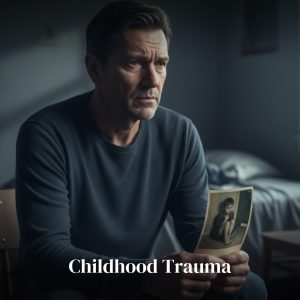
For many, trauma begins early — sometimes before they even understand what it means. Childhood trauma, early childhood stress, and child abuse leave a deep imprint on both the brain and body. These experiences don’t just disappear with age; they shape how you see the world and respond to it. The body keeps the score of those early wounds, often carrying them well into adulthood. And for some, it takes years to connect current struggles to those early roots.
Children who grow up with trauma may develop coping strategies to survive, like shutting down emotionally or staying constantly alert. These patterns become part of their nervous system, influencing everything from relationships to self-worth. Over time, the body may express this history through chronic pain, sleep problems, or difficulty with emotional connection. This doesn’t mean you’re doomed — it means your body was trying to protect you the best way it could. Understanding this helps remove shame and replace it with compassion.
As adults, these early wounds can show up in unexpected ways. You may find it hard to trust others, feel safe in your body, or make decisions with confidence. But with awareness, these patterns can be unlearned. Through trauma-informed care, attachment research, and compassionate support, you can gently untangle what happened to you from who you are. Healing from childhood trauma isn’t about erasing the past — it’s about finally feeling safe in your own skin.
Why Many Survivors Turn to Numbing and Rage
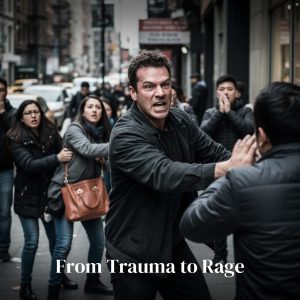
When you’ve lived through pain that feels unbearable, your body and mind find ways to protect you. For many trauma survivors, this protection comes in the form of numbing and intolerable rage. These emotions may seem opposite, but both serve the same purpose—to keep overwhelming feelings at bay. Traumatic stress can make the emotional brain stay alert, even long after danger has passed. In response, your body shuts down or explodes to avoid feeling helpless again.
You may find yourself detached during painful moments or consumed by anger you can’t explain. These reactions are not character flaws; they are survival instincts your score brain created to keep you safe. When traumatic memory resurfaces, your body might flood with stress hormones, leading to anger or emotional exhaustion. This is how trauma affects your ability to process feelings in healthy ways. It’s the brain’s attempt to manage too much pain at once.
Learning to see numbing and rage as messages instead of problems is the first step toward healing. These emotions point to parts of you still waiting for comfort and care. By working with safe trauma treatment approaches, like gentle movement or mindful breathing, you can begin to release the trapped energy behind them. Healing doesn’t mean never feeling anger again—it means learning how to listen to what it’s trying to tell you.
READ ALSO: Mindful Advantage Starts With One Breath
When Trauma Turns Physical
When trauma remains unresolved, it can deeply affect your physical health. The body’s stress response isn’t meant to stay active for long periods, yet for trauma survivors, the nervous system often remains stuck in survival mode. Over time, this constant tension and alertness can contribute to real and measurable health problems. Bessel van der Kolk explains that the body remembers what the mind tries to bury, and those memories can surface as illness rather than emotion. Understanding this connection is the first step toward healing.
Here are 5 major and well-known health conditions linked to unprocessed trauma:
- Heart disease – Prolonged stress and high cortisol levels can increase the risk of heart attack and high blood pressure.
- Chronic pain disorders – Conditions like fibromyalgia and tension-related pain often develop after years of stored stress.
- Autoimmune diseases – Trauma can disrupt immune regulation, contributing to illnesses such as rheumatoid arthritis and lupus.
- Chronic fatigue syndrome – The body’s constant fight-or-flight state drains energy, leading to deep, unexplained exhaustion.
- Digestive disorders – Trauma often affects the gut-brain connection, leading to irritable bowel syndrome (IBS), ulcers, or acid reflux..
These conditions show how trauma affects the entire human organism—not just the mind. They’re not signs of weakness, but proof of how powerfully the body remembers. With compassionate trauma treatment, including movement, therapy, and mindful rest, your body can learn that it’s finally safe to heal.
Trauma in Modern Society—A Silent Epidemic
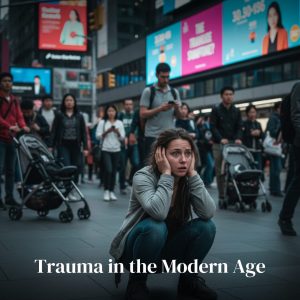
Today, trauma touches more lives than most realize. One in five Americans will experience trauma in a way that deeply affects their mental health and relationships. It can result from physical violence, sexual abuse, or even emotional neglect. Yet, many people walk around unaware that their anxiety, health issues, or substance abuse may be linked to traumatic experiences. This widespread issue calls for a trauma conscious society that sees people not as broken, but as surviving.
In recent years, van der Kolk’s research has inspired mental health professionals to create safer, more compassionate spaces. We now know that trauma informed care can change how communities heal. When hospitals, schools, and workplaces understand how trauma affects behavior, healing becomes a shared responsibility. People begin to see that symptoms like anger, fatigue, or withdrawal are not moral failings, but messages from a hurting body.
A true trauma conscious society listens with empathy and responds with care. It values mental health professionals who use compassion as much as science. It teaches that healing is not a luxury—it’s a right. When we shift from judgment to understanding, we give every traumatized person a real chance to heal. Together, we can build a culture that recognizes pain yet celebrates resilience.
How to Listen to Your Body to Attain Whole Living
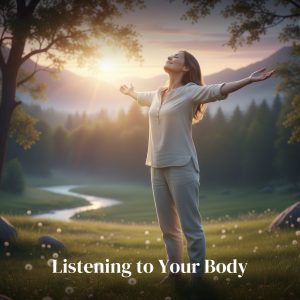
Your body is always communicating with you, even when you don’t realize it. Learning to listen to your body is one of the most powerful ways to achieve whole living. This means paying attention to your bodily sensations, your breath, and your emotions without rushing to fix them. Through body awareness, you begin to understand what your body needs—rest, movement, or simply kindness. This deep connection helps you develop an inner sense of safety and peace.
You can start small. Notice how your shoulders feel when you’re anxious or how your breath changes when you feel calm. These signals come from your nervous system, guiding you toward balance. Listening in this way also fosters self-awareness, helping you make choices that support rather than strain you. With time, you’ll notice that your body’s wisdom becomes easier to trust.
When you live in tune with your body, you practice self-respect. You begin to set boundaries, rest when needed, and care for yourself without guilt. This practice nurtures self-regulation and strengthens your connection to your own body. It’s not about perfection; it’s about presence. Whole living begins when you stop fighting your body and start hearing its gentle truth.
A Gentle Path Forward—You Are Not Broken
Healing is not a race, and you are not broken. The body keeps the score, but it also holds the map to freedom. Through self-awareness, compassion, and steady practice, you can learn to overcome trauma and build a life that feels safe again. Each small act of care—each breath of calm—helps your brain’s natural neuroplasticity rewire toward peace. You’ve already shown strength by surviving; now it’s time to learn how to thrive.
Remember that human resilience is powerful. Even after years of pain, your entire human organism can adapt and heal. Whether through therapy, community, or daily reflection, every step toward healing matters. What trauma literally reshape, love and awareness can renew. You don’t need to rush or prove anything—your body already knows the way forward.
As you continue this journey, remind yourself that healing is possible at any moment. You are not your trauma. You are the courage it took to keep going. The path ahead may be slow, but it is filled with hope, compassion, and growth. Whole living begins when you believe you deserve peace—and you do.
UP NEXT: Mindful Body Whispers the Path to Inner Balance
Centers for Disease Control and Prevention (CDC). (2021). Adverse Childhood Experiences (ACEs). Retrieved from https://www.cdc.gov/violenceprevention/aces/index.html
Felitti, V. J., Anda, R. F., Nordenberg, D., Williamson, D. F., Spitz, A. M., Edwards, V., … & Marks, J. S. (1998). Relationship of childhood abuse and household dysfunction to many of the leading causes of death in adults: The Adverse Childhood Experiences (ACE) Study. American Journal of Preventive Medicine, 14(4), 245–258. https://doi.org/10.1016/S0749-3797(98)00017-8
Heim, C., & Nemeroff, C. B. (2001). The role of childhood trauma in the neurobiology of mood and anxiety disorders: Preclinical and clinical studies. Biological Psychiatry, 49(12), 1023–1039. https://doi.org/10.1016/S0006-3223(01)01157-X
Levine, P. A. (2010). In an unspoken voice: How the body releases trauma and restores goodness. Berkeley, CA: North Atlantic Books.
McFarlane, A. C. (2010). The long-term costs of traumatic stress: Intertwined physical and psychological consequences. World Psychiatry, 9(1), 3–10. https://doi.org/10.1002/j.2051-5545.2010.tb00254.x
National Institute of Mental Health (NIMH). (n.d.). Post-Traumatic Stress Disorder (PTSD). Retrieved from https://www.nimh.nih.gov/health/topics/post-traumatic-stress-disorder-ptsd
Schwartz, R. C. (2021). No bad parts: Healing trauma and restoring wholeness with the Internal Family Systems model. Boulder, CO: Sounds True.
Siegel, D. J. (2012). The developing mind: How relationships and the brain interact to shape who we are (2nd ed.). New York, NY: Guilford Press.
Substance Abuse and Mental Health Services Administration (SAMHSA). (2014). SAMHSA’s concept of trauma and guidance for a trauma-informed approach. HHS Publication No. (SMA) 14-4884.
van der Kolk, B. A. (2014). The body keeps the score: Brain, mind, and body in the healing of trauma. New York, NY: Viking.
van der Kolk, B. A. (2006). Clinical implications of neuroscience research in PTSD. Annals of the New York Academy of Sciences, 1071(1), 277–293. https://doi.org/10.1196/annals.1364.022










